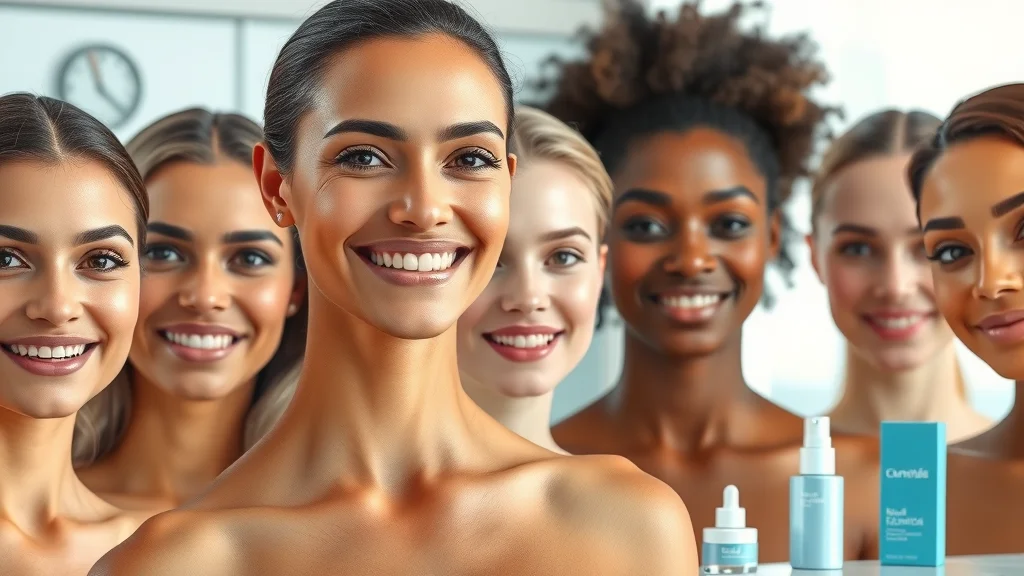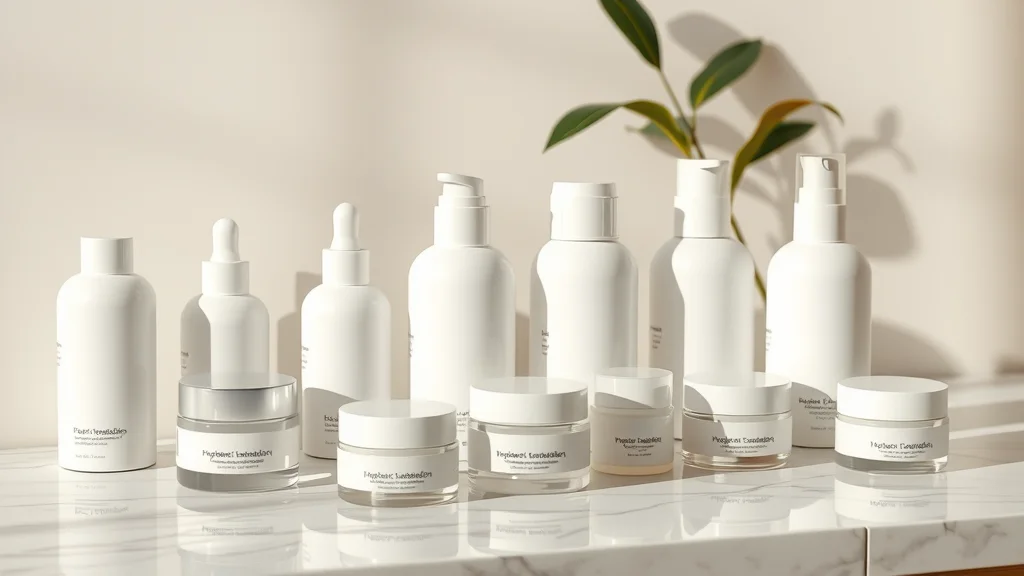Did you know that nearly 30% of dermatology visits are due to pigmentation issues? If you’ve ever caught yourself scrutinizing dark spots, age spots, or uneven skin tone, you’re not alone. Hyperpigmentation is not only a widespread concern—it’s surprisingly treatable across all skin types. This guide dives right into the most effective, science-backed hyperpigmentation fixes to help you restore luminous, even-toned skin, no matter your skin color or age.
Startling Facts: Understanding the Urgency of Effective Hyperpigmentation Fixes
"Did you know nearly 30% of dermatology visits are due to pigmentation issues? Hyperpigmentation is more common—and treatable—than most think."
Hyperpigmentation is a common condition that impacts millions globally, cutting across all age groups and skin tones. The urgency lies not only in its widespread prevalence but in the significant emotional effects—that loss of confidence from unexpected dark spots or persistent acne scars. For many, navigating treatment options can be overwhelming as the market is flooded with creams, serums, and promises that don’t always deliver. The good news? Dermatological science has advanced, and tailored hyperpigmentation fixes now offer genuine solutions for every skin type.
From stubborn sun spots to melasma or post-inflammatory marks from acne, the causes and presentations of hyperpigmentation are diverse. What unites them is their treatability—with the right blend of clinical approaches, topical treatments, and lifestyle changes. Addressing hyperpigmentation promptly is vital, especially as some pigment changes can signal underlying health issues or, when untreated, become more resistant over time. Understanding effective fixes isn't just about aesthetics—it's about taking decisive steps for your skin’s health and confidence.
What You'll Learn: Your Comprehensive Guide to Hyperpigmentation Fixes
Latest evidence-based hyperpigmentation fixes for all skin tones
Comparison of popular pigmentation treatment options
Science behind hyperpigmentation and what triggers dark spots
How to choose the right treatment option for your skin type, including age spots
Key lifestyle strategies and sun protection essentials

Defining Hyperpigmentation: Types, Causes, and Why It Matters
What Is Hyperpigmentation?
Hyperpigmentation is a common skin condition where certain areas of the skin become darker than the surrounding tissue due to excess melanin production. Melanin is the pigment responsible for skin, hair, and eye color, and its overproduction can be triggered by inflammation, sun exposure, hormonal changes, or skin injuries such as acne. These darker patches—often called dark spots or age spots—can show up anywhere on the body but are most frequently noticed on the face, hands, and other sun-exposed areas.
The appearance of hyperpigmentation can be distressing, particularly as it sometimes takes months to fade without targeted hyperpigmentation treatment. While usually harmless, these spots can signal underlying skin conditions requiring expert assessment. Understanding what hyperpigmentation is helps demystify why so many people—from those with lighter skin to those with dark skin tones—seek out the latest pigmentation treatment options for smoother, more even-looking skin.
Contributing Factors: Genetics, Environment, and Hormonal Influences
Why does hyperpigmentation occur in the first place? The answer lies in a mix of genetic, environmental, and hormonal triggers. Genetics can determine your skin tone and susceptibility to certain forms of pigment issues such as melasma or freckles. Environmental factors, most notably sun exposure, UV rays, and pollution, accelerate melanin production, resulting in new or darkened spots. Frequently, even brief sun exposure without adequate sun protection can aggravate existing spots or cause new ones, especially in high-risk areas of the skin.
Hormonal fluctuations—from pregnancy, birth control, or even certain medical conditions—can also trigger hyperpigmentation, particularly melasma. Other causes include inflammation from acne (post-inflammatory hyperpigmentation), medication side effects, or autoimmune disorders. Recognizing these contributing factors offers insight into not just how to treat hyperpigmentation, but how to minimize risks and prevent recurrence with the right treatment option and proactive skincare habits.
Types of Hyperpigmentation: Melasma, Sun Spots, Age Spots, and More
There isn’t just one form of hyperpigmentation. Among the most prevalent are melasma (blotchy brown patches often seen in pregnant women or those with hormonal changes), sun spots (also called liver or age spots, caused by cumulative sun damage), post-inflammatory hyperpigmentation (PIH, following acne scars or injuries), and freckles. Each type responds differently to treatment options, with skin tone, cause, and severity guiding which hyperpigmentation fixes will be most effective.
Importantly, the right approach factors in both the type and depth of pigment. For example, deeper dermal pigment may need advanced interventions like laser therapy or chemical peels, whereas surface-level discoloration often responds well to topical treatments such as hydroquinone or antioxidant serums. Pinpointing the correct type is the first step toward successful long-term pigmentation treatment.
Types of Hyperpigmentation |
Typical Causes |
Best-suited Fixes |
|---|---|---|
Melasma |
Hormonal changes, sun exposure |
Topical treatments, chemical peels, lasers, strict sun protection |
Sun Spots/Age Spots |
Chronic sun damage, aging |
Chemical peels, topical antioxidants, professional devices |
Post-Inflammatory |
Acne, eczema, skin injuries |
Gentle peels, topical agents, expert-guided care |
Freckles |
Genetics, intermittent sun exposure |
Sun protection, lightening serums, lasers (case-by-case) |

How Hyperpigmentation Affects All Skin Tones
Hyperpigmentation Across Different Skin Tones: Key Considerations
All skin tones can experience hyperpigmentation, but it may look different and respond uniquely to treatment across the spectrum. People with darker skin (Fitzpatrick types IV-VI) tend to experience more noticeable post-inflammatory pigment changes after pimples, injuries, or even minor procedures. Conversely, those with lighter skin often develop sun spots or freckles due to solar damage accumulated over time. Understanding your skin type is critical, as some treatment options—including certain lasers or peels—may pose a higher risk of irritation or new pigment changes in darker skin tones.
The goal with any pigmentation treatment is to reduce the appearance of dark spots and even out areas of the skin without causing further harm, such as hypopigmentation (skin lighter than the surrounding) or worsening of existing spots. Expert guidance ensures that any fix—be it a topical treatment, chemical peel, or advanced device—takes the sensitivity and resilience of your distinct skin tone into account, leading to lasting, radiant results.

Identifying the Severity: When to Seek Hyperpigmentation Treatment
The moment to seek hyperpigmentation treatment is when persistent spots impact self-esteem, fail to improve with basic care, or multiply over time. Early, proactive intervention is key, as longstanding or deep pigment can be challenging to reverse and may indicate underlying skin conditions. Dermatologists use advanced tools—from skin tone assessments to dermatoscopic exams—to determine the depth and cause of your hyperpigmentation, which guides the selection of the safest and most effective treatment option.
Clear warning signs include pigment that gets larger or darker, feels raised, or is associated with other skin symptoms like itching or bleeding—these warrant immediate medical evaluation. In most cases, however, expert-led treatment plans, tailored to your skin type and specific pigment issue, provide reliable paths to reduce hyperpigmentation and restore healthy, even skin tone.
Expert-Approved Hyperpigmentation Fixes: In-Office and At-Home Treatment Options
Chemical Peels: How They Work and Ideal Candidates
Types of chemical peels for pigmentation treatment
Expected results by skin tone
Risks and benefits
Chemical peels are a cornerstone of in-office hyperpigmentation fixes, harnessing the power of carefully selected acids to exfoliate and resurface areas of the skin. There are several types—superficial (light), medium, and deep peels—each targeting different skin concerns, including age spots, sun spots, and acne scars. Superficial peels like glycolic or lactic acid are gentle enough for most skin types and require minimal downtime, while deeper peels, such as trichloroacetic acid (TCA), tackle more severe, stubborn dark spots.
Results depend on both the individual’s skin tone and the depth of pigmentation. For lighter skin, medium and deep peels are often safe and yield quicker improvement. For darker skin, only experienced professionals should perform chemical peels, as there’s a heightened risk of post-procedure pigment changes. The key benefits include significant reduction in visible dark spots, smoother skin texture, and enhanced luminosity. However, potential risks—such as irritation, temporary redness, and, in rare cases, new pigmentation—should be discussed in advance. Always follow post-peel instructions, especially sun protection, to optimize and preserve results.

Topical Treatments: Hydroquinone, Retinoids, and Antioxidants
Prescription vs. over-the-counter hyperpigmentation treatment options
Best products for different skin types
First-line treatments for most forms of hyperpigmentation are topical agents. The gold standard is hydroquinone, a skin-lightening ingredient available in both over-the-counter and prescription formulations. It works by inhibiting melanin production, making it especially effective for dark spots, melasma, or age spots. Retinoids—another trusted family of ingredients—promote cell turnover, reducing the appearance of stubborn pigment and acne scars.
Antioxidant-rich serums, particularly those with vitamin C and niacinamide, help defend against environmental damage and fade newer discolorations. Prescription treatments generally act faster but may come with higher risks of irritation or sensitivity, especially in sensitive skin types and people with dark skin. Over-the-counter options, meanwhile, tend to be more gentle but require longer, consistent use. An individualized plan, sometimes alternating or combining agents, is often the best approach to safely reduce the appearance of hyperpigmentation for your unique skin needs.

Laser Therapies and Light Treatments for Stubborn Pigmentation
When topical treatments and chemical peels aren't robust enough—particularly for deeper pigmentation or large areas of the skin—laser and light-based therapies are a powerful option. These technologies use bursts of energy to break up clusters of pigment, helping fade dark spots and target resistant discoloration like sun damage and age spots. Q-switched lasers, intense pulsed light (IPL), and fractional lasers are some of the most common devices used in hyperpigmentation treatment.
However, it's essential for people with darker skin tones to consult a highly skilled provider, as certain lasers can inadvertently cause more pigment issues or hypopigmentation. Customized protocols ensure that your skin tone and type are matched to the safest and most effective device, reducing the risk of side effects and maximizing your chance for an even, radiant complexion.
Combination Approaches: Multi-Step Fixes for Persistent Spots
"A board-certified dermatologist says: 'Success isn’t about one treatment—it’s often the result of a tailored combination that considers skin tone and cause of pigmentation.'"
Stubborn or mixed-type hyperpigmentation often requires a multi-step approach—combining chemical peels, topical treatments, in-office lasers, and ongoing sun protection. These regimens are meticulously designed by dermatologists to address your skin type, underlying causes, and the specific presentation of spots. Layering fixes boosts efficacy while minimizing risks, as synergistic treatments like retinoids primes the skin for peels or lasers, and antioxidants promote healthier recovery.
Consistency is vital: Follow-up visits, regular reassessment, and periodic maintenance treatments help lock in and sustain your results. With patience and professional guidance, even the most persistent pigmentation can be dramatically reduced, restoring confidence no matter your age or background.
Natural and Lifestyle Hyperpigmentation Fixes That Complement Treatment Options
Sun Protection: The Essential Step in Any Hyperpigmentation Routine
No matter what hyperpigmentation fixes you use, the single non-negotiable step is meticulous sun protection. UV exposure not only causes new dark spots but worsens existing ones, reversing progress made with even the most advanced pigmentation treatment. Broad spectrum sunscreens with a high sun protection factor (SPF 30 or higher) should be applied daily—rain or shine, indoors or out—on all exposed areas of the skin.
Look for sunscreens that suit your skin type—gel or water-based for oily skin, creams for dry skin, and mineral formulas for sensitive skin or dark skin prone to breakouts. Dress smart: Wide-brim hats, sunglasses, and sun-protective clothing double down on defense. Remember, diligence with sun protection is the most powerful way to prevent and reduce hyperpigmentation and ensure any clinical fix lasts long-term.

Diet and Supplements: Supporting Clearer Skin from Within
Your daily diet is another key player in managing hyperpigmentation. Antioxidant-rich foods—like berries, citrus fruits, leafy greens, and tomatoes—defend your skin cells against oxidative stress and support skin renewal. Omega-3 fatty acids, zinc, and vitamins E and C, available both from diet and supplements, enhance the skin’s resilience and help minimize future pigment changes related to sun damage or inflammation.
Hydration is equally vital. Drinking enough water flushes toxins, improves overall skin texture, and boosts cellular repair, all of which aid in fading dark spots. If considering supplements, consult a dermatologist or nutritionist, as some ingredients may interact with medications or specific skin conditions. Remember, dietary strategies work best alongside—rather than in place of—evidence-based hyperpigmentation fixes.

Skincare Habits That Prevent and Diminish Age Spots and Hyperpigmentation
Daily skincare choices can profoundly impact your skin’s tone and long-term clarity. Gentle cleansing, non-abrasive exfoliation, and using products formulated for your skin type help uphold a healthy barrier and ward off irritation that can lead to new skin spots. Avoid picking or scratching at spots and pimples—this dramatically lowers the risk of post-inflammatory hyperpigmentation, especially in those with dark skin tones.
Frequent self-assessment of your skin tone and spot-checks with a professional allow for timely intervention. Incorporating antioxidant-rich serums and moisturizer in your routine not only prevents new dark spots but supports ongoing pigment correction when paired with clinical or prescription hyperpigmentation fixes.
Apply broad spectrum SPF daily
Avoid picking or scratching skin
Incorporate antioxidant-rich products
Regular skin tone assessments with professionals
Table: Comparing Hyperpigmentation Fixes and Treatment Options
Fix |
Duration to Results |
Cost |
Suitable Skin Tones |
Potential Risks |
|---|---|---|---|---|
Chemical Peels |
2-6 weeks for visible reduction |
Moderate to High (In-office) |
All (special care for dark skin) |
Irritation, temporary pigment change |
Topical Treatments |
6-12 weeks with consistent use |
Low to Moderate |
All skin types |
Redness, peeling, sensitivity |
Laser Therapies |
1-3 sessions (4-8 weeks apart) |
High |
Lighter skin generally, expert use for darker skin |
Burst capillaries, pigment loss (rare in skilled hands) |
Lifestyle Changes |
Continuous support/prevention |
Low |
All skin tones |
Minimal (if any) |

People Also Ask: Addressing Top Hyperpigmentation Fixes Questions
What is the fastest way to cure hyperpigmentation?
Answer: The fastest hyperpigmentation fixes often combine in-office treatments like chemical peels or laser therapy with prescription topical agents. These methods require skin type assessment and professional oversight for best results.
How to treat hyperpigmentation during pregnancy?
Answer: During pregnancy, safe hyperpigmentation treatment options include sun protection and certain topical agents like azelaic acid, under medical guidance. Avoid retinoids and hydroquinone until after delivery.
How to treat hyperpigmentation in kids?
Answer: For children, gentle pigment treatment relies on sun protection, moisturizing, and targeted topical ingredients like vitamin C. Consult a dermatologist before starting any fix or treatment option.
Is it possible to fade hyperpigmentation?
Answer: Fading hyperpigmentation is possible with consistent use of evidence-based fixes, including topical treatments, sun protection, and professional hyperpigmentation treatment, depending on severity and skin tone.
FAQs on Hyperpigmentation Fixes
Which hyperpigmentation fixes are safest for sensitive skin? Gentle topical treatments such as azelaic acid, niacinamide, and vitamin C, paired with consistent sun protection, are safest. Always patch test new products and consult a dermatologist before beginning a new regime for sensitive skin types.
How long do results from hyperpigmentation treatment options last? With maintenance—such as UV avoidance and a customized skincare routine—results can be very long-lasting. However, new sun damage or hormonal changes may result in recurrence, necessitating occasional touch-ups.
Can hyperpigmentation reappear after treatment? Yes, especially if sun protection or other preventative measures lapse. Regular monitoring and ongoing maintenance reduce the odds of recurrence.
Are there permanent pigmentation treatments available? While dramatic, long-term improvement is possible, few treatments are truly permanent. Lasting results demand a blend of professional care and daily preventive habits like sun protection.
Key Takeaways: The Most Effective Hyperpigmentation Fixes
Expertly recommended, evidence-backed hyperpigmentation fixes exist for every skin tone and concern
Combination treatments yield the best, longest-lasting results
Sun protection is the most vital, universal step
Consulting professionals ensures safety and efficacy for your chosen treatment option
Start Your Hyperpigmentation Fixes Journey Today With Professional Guidance
Ready to fade dark spots and reclaim radiant, even-toned skin? Consult a board-certified dermatologist to map out your safest and most effective hyperpigmentation fixes—your best skin starts now!
 Add Row
Add Row  Add
Add 




Write A Comment